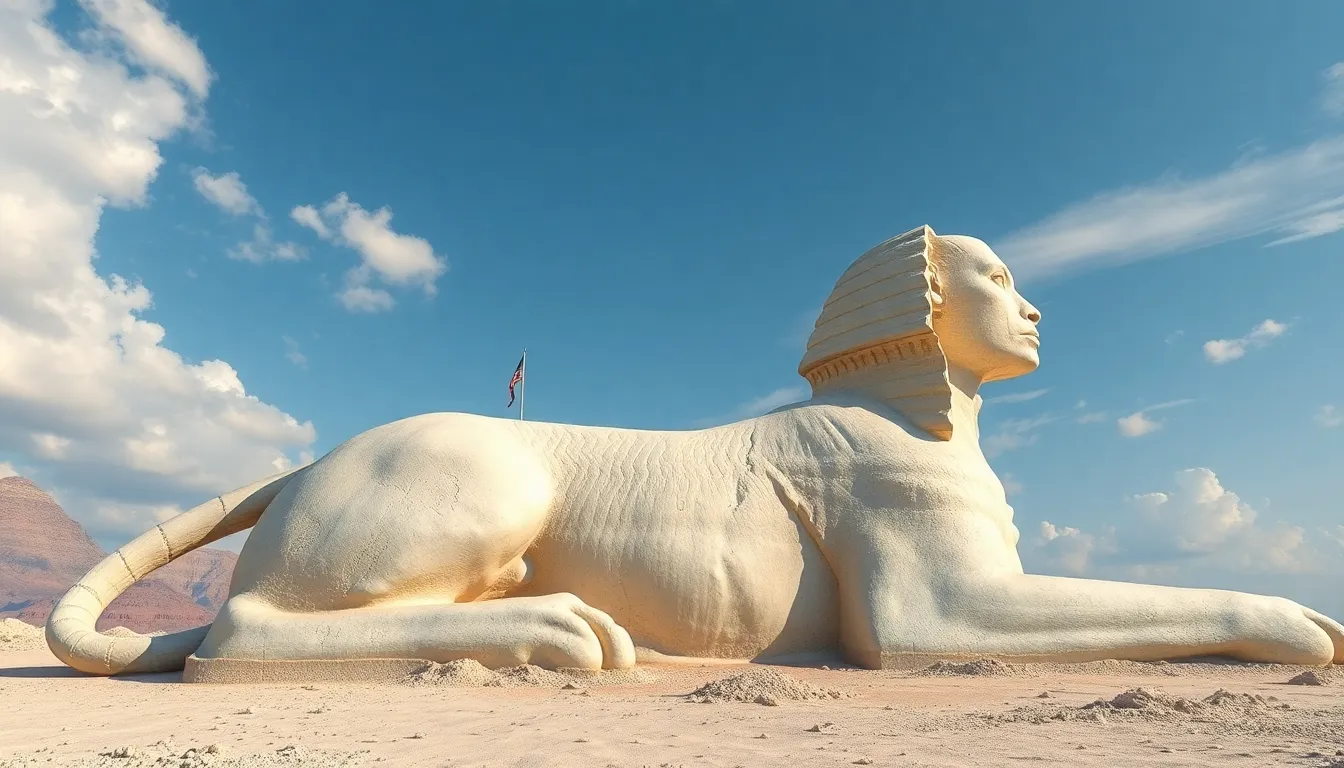The Sphinx and Its Representation in Modern Art
I. Introduction
The Sphinx, a creature with the body of a lion and the head of a human, has captivated the imaginations of many throughout history. Its historical significance spans various ancient cultures, particularly in Egypt, where it served as a guardian of sacred spaces. The Sphinx symbolizes strength, wisdom, and mystery, embodying the complex interplay between humans and the divine.
In ancient cultures, the Sphinx held immense importance, appearing in myths, literature, and monumental architecture. This article aims to explore the representation of the Sphinx in modern art, examining how contemporary artists interpret this ancient symbol and its relevance in today’s cultural landscape.
II. The Origins of the Sphinx
The Sphinx’s origins can be traced back to ancient Egypt, where it was often associated with the sun god Ra and the pharaohs. The most famous Sphinx, the Great Sphinx of Giza, stands as a testament to the architectural and artistic prowess of the ancient Egyptians.
In ancient times, the Sphinx symbolized various concepts, including protection and divine wisdom. It was believed to have the ability to guard sacred places, making it an essential figure in temples and tombs.
The Sphinx also played a significant role in mythology, particularly in the story of Oedipus, where it posed a riddle that challenged the hero’s intellect. This interplay of knowledge and mystery highlights the Sphinx’s complex nature and its significance in ancient storytelling.
III. The Sphinx in Popular Culture
In modern popular culture, the Sphinx continues to be a powerful symbol, appearing in various forms of literature, film, and art. Its enigmatic presence has inspired countless stories, often representing the themes of knowledge, mystery, and the unknown.
The influences of the Sphinx on modern storytelling are profound, with its imagery often evoking a sense of intrigue and curiosity. Notable examples of the Sphinx in contemporary media include:
- The film “The Mummy,” where the Sphinx is portrayed as a guardian of ancient secrets.
- Books like “The Oedipus Trilogy,” which explore the mythological roots of the Sphinx.
- Video games that incorporate the Sphinx as a puzzle or challenge for players.
IV. Artistic Interpretations of the Sphinx
The Sphinx has inspired various modern art movements, from surrealism to pop art. Artists have depicted the Sphinx in diverse ways, reflecting their unique perspectives and techniques. Some notable artists who have incorporated the Sphinx into their work include:
- Salvador Dalí, known for his surreal interpretations that challenge perceptions of reality.
- Andy Warhol, who used the Sphinx in his pop art to comment on consumer culture.
- Henri Matisse, who featured the Sphinx in his explorations of color and form.
The artistic styles used to depict the Sphinx vary widely, from realistic sculptures to abstract representations, allowing for a rich tapestry of interpretations that continue to evolve.
V. The Sphinx in Sculpture and Installation Art
Three-dimensional representations of the Sphinx have been prominent in sculpture and installation art. These works often seek to engage viewers in a dialogue about the Sphinx’s symbolic meanings and cultural significance.
Prominent sculptures and installations inspired by the Sphinx include:
- The Great Sphinx of Giza, a monumental work that remains a symbol of ancient Egyptian civilization.
- Modern installations that reinterpret the Sphinx in urban settings, challenging traditional views.
- Interactive sculptures that invite viewers to engage with the Sphinx’s riddles and mysteries.
The impact of scale and material on viewer perception is significant. Larger-than-life sculptures demand attention and evoke awe, while smaller pieces may invite intimate contemplation of the Sphinx’s complexities.
VI. The Sphinx in Digital and Conceptual Art
Technology has transformed how artists represent the Sphinx in modern art. Digital art and conceptual pieces challenge traditional interpretations, offering new ways to engage with this ancient symbol.
Examples of digital art featuring the Sphinx include:
- Virtual reality experiences that allow users to explore the Sphinx and its historical context interactively.
- Digital illustrations that reimagine the Sphinx in futuristic or fantastical settings.
- Conceptual art pieces that use the Sphinx as a metaphor for contemporary issues.
These forms of art not only reflect the Sphinx’s enduring legacy but also invite audiences to reconsider its meanings in light of modern challenges and technologies.
VII. Cultural Appropriation and Interpretation
The representation of the Sphinx in modern art raises important discussions about cultural appropriation and sensitivity. As artists draw on ancient symbols, the debate surrounding ethical representation becomes increasingly relevant.
Issues of cultural appropriation often arise when artists use the Sphinx without a nuanced understanding of its cultural significance. Perspectives from artists and scholars emphasize the need for respectful engagement with cultural symbols, advocating for:
- Collaboration with cultural representatives to ensure authentic representation.
- Research into the historical context of the Sphinx to inform artistic practices.
- Acknowledgment of the Sphinx’s origins and its significance in ancient cultures.
VIII. Conclusion
The Sphinx remains a powerful symbol, resonating through both ancient and modern contexts. Its significance in ancient cultures as a guardian of wisdom and mystery continues to inspire contemporary artists and audiences alike.
As the representation of the Sphinx evolves in contemporary art, it reflects broader cultural narratives and challenges. The future of the Sphinx’s representation in art and culture will likely continue to provoke thought and discussion, ensuring that this ancient symbol endures in the collective imagination.




